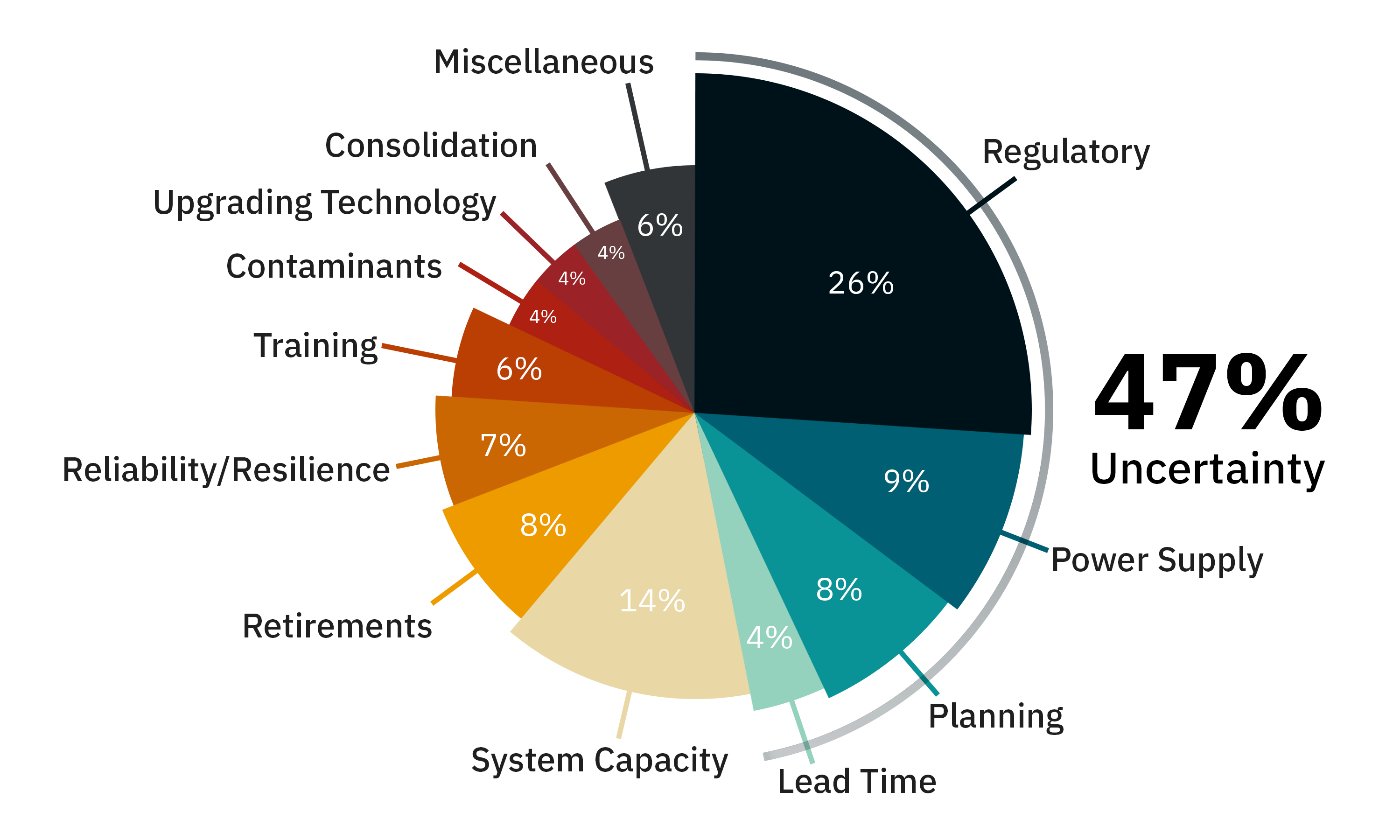
By Tom Kalb, Director, Coastal Bend Midstream Program, Texas A&M University-Corpus Christi
Uncertainty about regulatory and logistics issues were top-of-mind concerns in one-on-one interviews of 100 attendees of the 2025 GPA Midstream Convention, held Sept. 21-24 in San Antonio, Texas.
During the convention, I buttonholed 100 random people on the convention floor to ask: “What do you think is the most important issue facing the midstream industry today?”
The intentionally open-ended question invited convention attendees to share thoughts and engage in a discussion of the industry and its future.
Uncertainty dominated concerns, with regulatory issues identified as the primary source of uncertainty. Power supply, planning, and lead time for equipment were also mentioned by multiple individuals. System capacity was the important but distant second-place concern, and loss of expertise due to retirements, a perennial top concern, took third place.

The shift in national political leadership was supposed to alleviate concerns about the regulatory environment, and it did — from 35% in 2024 to 26% this year. That the concern remains at the top as a standalone issue is testament to the reality that regulatory change is a slow-moving monster.
Interestingly, public ignorance — which was number two in 2024 — dropped out of the 2025 list. This may be an important oversight by respondents.
Since the 2024 Convention survey, midstream has moved from an environment driven by governmental policy constraints to an industry driven by new market dynamics focused on artificial intelligence and liquefied natural gas demand.
These newly energized sources of capacity demand and system growth contribute to the uncertainty and show up in concerns about system capacity, reliability/resilience, training, contaminants, upgrading technology, and consolidation. This demand growth also magnifies the issue of the loss of experienced people retiring.
Many of the midstream industry's biggest challenges can be directly addressed by companies:
- Uncertainty. While regulatory concerns are the primary source of uncertainty, power, planning, and lead time together were mentioned by 21% of respondents as top worries. Companies can reduce their uncertainty by identifying and adopting best practices regarding power supply, planning, and lead time, and aggressively managing these problems. This could include aggressively revisiting strategies, staffing, and processes. Companies could also gear employee compensation to incentive improving performance on these issues or enhancing pricing bonuses for early delivery and completion. Time is money.
- Retirements and Training. Companies can mitigate effects of an aging workforce and recruiting challenges with specific actions. For example, executives can consider modifying mandatory retirement ages and instituting term-limited retention policies for critical people. Companies should reassess existing training programs to ensure they’re meeting business needs and then make targeted investments. These actions may enable companies to better meet the requirements of the current AI and LNG-driven capacity expansion, as well as some of the issues underlying uncertainty.
- Reliability/Resilience, Contaminants and Upgrading Technology. The importance of these issues is magnified by the rapid change in the midstream industry. Uncertainty, rapid demand growth, and consolidation are not conducive to consistent high-quality operations and upgrading technologies in the field in a timely manner. Reassessment and investing in the areas where a company can directly act may provide relief.
Most companies are already aggressively managing areas where they have control, but all companies can do better. Given the challenges facing the industry, companies have every reason to pursue a path of continuous improvement.
While 26% of last year's GPA Convention poll of 100 people identified public ignorance as the second most critical challenge facing the industry, only one person agreed this year. This change is likely due to the shifting national political landscape, but the one certainty about political landscapes is that it continues to shift.
Last year’s attendees said the right path for industry leaders and organizations such as GPA Midstream is to constructively and aggressively engage in discourse with regulatory and political leaders to enable them to make the best, practical decisions for our energy system. This advice from last year’s GPA Convention attendees is salient today.
Energy industry leaders and professional organizations should collaborate more to better educate society and policymakers on energy matters. Top priorities would include a high-level understanding of the energy system that is accessible and digestible to non-technical people in a succinct and interesting manner. This effort would need to include educating people about the tradeoffs, pace, and materials and supply challenges of changing the energy system. One such initiative is GPA Midstream's Let's Clear the Air campaign, which industry professionals can support.
GPA Midstream has a history of working cooperatively with regulatory agencies and legislators to achieve practical solutions to statutory and regulatory goals. To join the effort to engage with government policymakers, consider joining a GPA Midstream committee. These committees are forums where industry peers work together to provide detailed comments responding to regulatory proposals and to advocate on behalf of the midstream.
Thomas Kalb is Director of the Coastal Bend Midstream Program at Texas A&M University-Corpus Christi. He is a regular contributor to the Let’s Clear the Air blog, where he writes about issues, policies, and considerations impacting how we produce and use energy.


